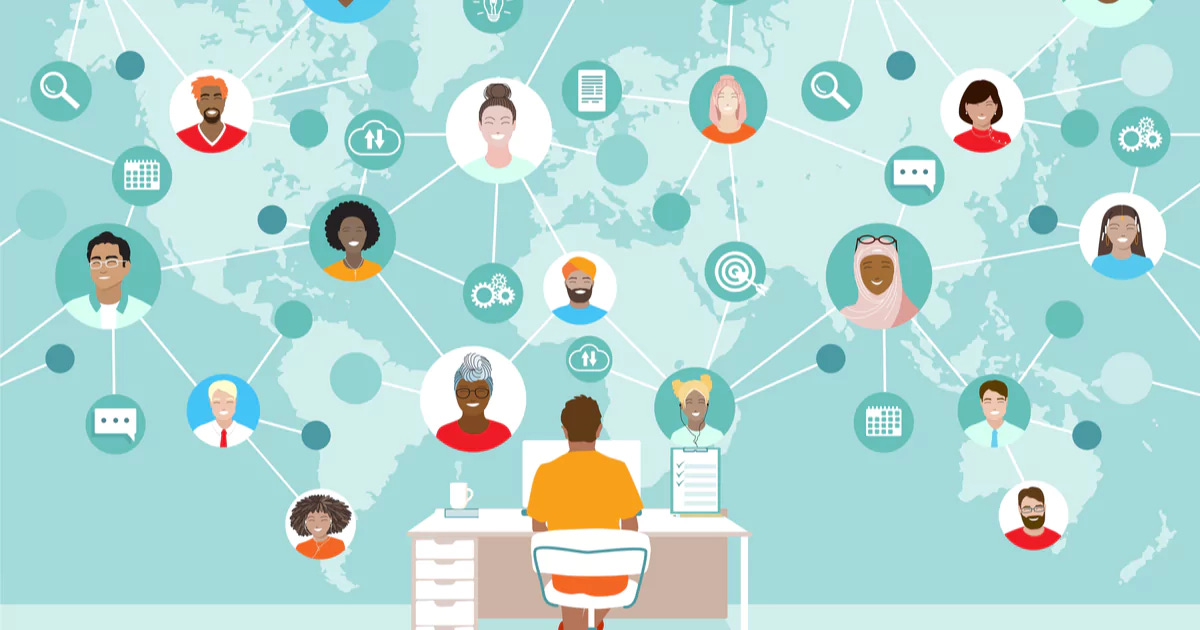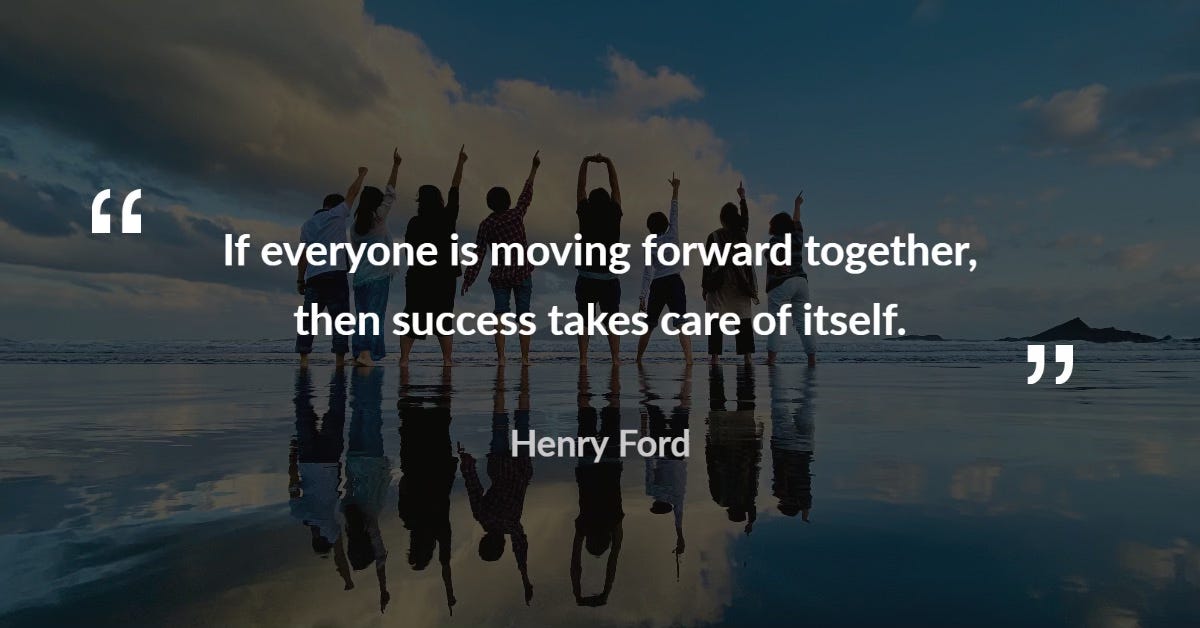Harnessing Network Effects for High Performance
Understanding Metcalfe’s Law: The Power of Networks
Metcalfe’s Law is a technology principle that quantifies something intuitive: networks become exponentially more valuable as they grow.
Robert Metcalfe, the co-inventor of Ethernet in the 1980s, formulated this principle that states that the value of a network is proportional to the square of the number of connected users. In simple terms, if you double the number of participants in a network, you more than double its value, because each new user (node) doesn’t just add a single unit of value, it creates a larger number of new connections, new pathways within the network.
Two phones can only connect with each other, make one connection. As more nodes join, the number of possible connection increases geometrically. For example, 5 phones yield 10 connections, 10 phones will yield 45 connections, and 12 phones 66, illustrating Metcalfe’s Law in action.
Metcalfe’s Law underpins what we now call “network effects”
This law was first observed in the field of telecommunications, with a classic example being the fax machine: a single fax machine is useless, but every additional fax machine makes all the others more useful by multiplying the number of people who can exchange documents. With the arrival of the internet, Metcalfe’s Law took center stage explaining the explosion of value in digital networks.
Think of Facebook (now Meta) for example, which started on a single university campus, but as new cohorts of friends join, the platform’s utility grew exponentially. The internet accelerates the creation of nodes in the millions , making the possible connections in the network astronomical. As more users join a platform, the positive feedback look attracts even more users. With billions of users today, Facebook’s value to each user (from connectivity to content available) is magnitudes higher than when it was a small network
Network Effects in Education
Network effects aren’t confined to the big tech giants only, we can see them also in education, in knowledge-sharing communities. The Internet’s expansion to billions of users unlocked exponential value in online education by connecting people worldwide. An online learning platform becomes more valuable with each additional student and instructor who joins: more questions get asked and answered, study groups form, more insights shared, new opportunities emerge and a richer pool of peer knowledge develops. In essence, each new connection magnifies the collective learning and the resources available to everyone, not just a few.
Collaboration and sharing create an exponential lift in knowledge and innovation.
Metcalfe’s Law and the Exponential Power of Team Culture
From Industry Networks to Team Networks: Driving Performance Through Connectivity
The idea of Metcalfe’s Law doesn’t only apply to tech platforms, it offers a powerful insight into organizational performance. You can think of your organization itself as a network: employees, teams, departments, and stakeholders are the “nodes,” and their interactions are the connections. Just as a network of devices or users gains value through connectivity, a company gains performance and innovative capacity through collaborative connectivity among its people.
The better the talent, the stronger the collaborative ways of working, and the higher the tolerance to pressure-testing all assumptions… the smarter the collective brain gets.
In fact, the network effect inside a company can be observed in everyday tools. For instance, a communication platform like Slack or Microsoft Teams in a small office becomes more valuable as more employees actively use it, because it enables smoother collaboration and information sharing across the whole group. When colleagues are connected and knowledge flows freely, the organization’s ability to find solutions to common problems and move to execution without delay, grows significantly. Every new hire “node” multiplies opportunities by bringing new ideas and bridging different groups. The value is not just in adding one more set of hands.
However, superior performance doesn’t emerge automatically from having a large group of people, it emerges from how those people connect and collaborate. This is where intentional culture design comes into play.
“Great things in business are never done by one person; they’re done by a team of people.” Steve Jobs
Steve Jobs was not just talking about classic teamwork, he was talking about “magic.” At Pixar, he designed the building to “promote encounters and unplanned collaborations.” He created a central atrium (even initially having only a single set of restrooms by that atrium) to force people from all corners of the company to bump into each other and mingle, and asa Pixar’s director Brad Bird observed, “when people run into each other… things happen.” Human interactions spark new ideas and solutions that wouldn’t surface if people stayed siloed when you actively lead for “collaboration and creativity,” creating an intentional culture design to harness the network effect of human interaction.
Beyond physical design, organizational structure can amplify or stifle internal network effects. Traditional rigid hierarchies with isolated departments are like networks with few links, where information trickles slowly and knowledge often stays localized. However, forward-thinking organizations that adopt networked structures know that smaller, autonomous teams that communicate across a flat structure create networks and multiply their impact by reducing unnecessary bureaucracy and encouraging teams to connect directly. This way, information flows, creativity sparks and agility increases. In a networked organization, innovative ideas can emerge from all corners because every team member is empowered to contribute freely, as long as you build a strong team culture of trust and openness, that fosters camaraderie and shared purpose to motivate all members to excel because what they have to contribute will add to more than the sum of the parts. This way, collaboration is not forced, it becomes the natural way of working for this team and organization. It can be done!
Trust acts as the bandwidth of your organizational network, the higher it is, the more rich information and creative energy can flow between people.
A Personal Story - Building the Collective Brain
I had the privilege to work with a group of very talented individuals years back at a company where we were trying to solve for the following problem: “How can we tap into the collective brain of a vast and diverse geographical organization across countries and cultures, where everybody is doing the same work but knowledge is kept local? We wanted to build a culture where learnings would be shared in real time, globally, to enable collaboration and co-creation of the best solutions to common problems. I wanted innovation not to be the result of a few geniuses but the organic result of our culture. How then to create a collective brain that learns fast, fails faster and share insights in real time rather than in “Best Practices” poster session at an annual event?
What we did was to create a cross-country council to designed the solution, bottoms up, not top down. In less than a year we had in place a small but mighty internal network using simple technology to sure that if a field team member in Istanbul had a question by an important customer, all field team members working on the same topic around the world would know it and either help provide the best answer or learn from that interaction ahead of time, so by the time it would happen in their own country, they would be already ahead of it. The result was that the person with the question locally benefited by dozens of colleagues crowd-sourcing the best answer, and the teams in the other countries would not only be ready ahead of time should the same question be asked, but the way of working resulted in more creativity and innovation to solve problems did not yet exist.
The incredible turn of events was that a year into this pilot work, COVID pandemic hit, we all had to move to remote work, but our team was already not only well connected online, but used to collaborate. It was not about an ad-hoc ask but an organic way of being part of the team. Engagement was high and culture was strong.
Building a Networked Team Culture
Henry Ford’s insight highlights the essence of leveraging network effects within your organization: unify your people, and performance will follow. It is your responsibility to engineer exponential momentum.
Align Everyone on a Shared Vision and Purpose: Why Matters
Enable and Encourage Cross-Team Connections: Break down silos by design and make information transparent by default.
Cultivate a Culture of Trust, Openness, and Learning: People won’t leverage the network if they’re afraid to speak up.
Empower Small Teams and Decentralize Decision-Making: Push authority and autonomy outward to your network’s nodes. Small, agile teams can accomplish more, faster.
Recognize and Reward Collaborative Excellence: Highlight stories of cross-department teams that solved problems together. “When one of us wins, we all win.”
Have a clear vision with even more clear goals, and transform your organization into a vibrant, interconnected network of talent and ideas. In such environment momentum will builds naturally
In Closing…
Metcalfe’s Law teaches us that connecting nodes creates value squared. This is a powerful reminder that connecting people creates value multiplied.
Metcalfe’s Law predicts explosive growth in a user network, therefore a well-connected organization can experience exponential gains in idea generation, problem-solving speed, and overall momentum, if you create a culture where communication is open, knowledge is shared, and collaboration is king.
If you want to be an effective leader, it is your job to balance visionary thinking (imagining an exponential organization) with pragmatic action (reinforcing the daily habits and systems of great teamwork) to Build a Collective Brain that Delivers Exceptional Results.
P.S. Before I go, here you have “The Treat,” where I share some of the music that kept me company while writing … Enjoy as you bid farewell to this post
“Lead yourself, Learn to live. Lead others, Learn to Build.”
If you enjoyed reading this post consider subscribing to the newsletter for free, joining the community and sharing your thoughts.







